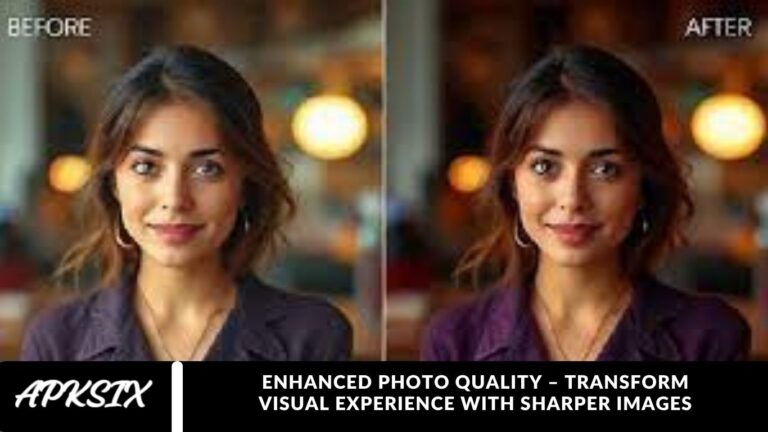High-quality images are more than just a trend they’re essential. Whether you’re a social media influencer, a professional photographer, or simply capturing moments on your smartphone, the demand for sharp, vibrant, and detailed photos is at an all-time high. This growing need has sparked rapid innovation in photo enhancement technology, revolutionizing how we capture, edit, and share images. What was once considered a luxury photo enhanced quality is now a necessity, turning everyday snapshots into stunning visual masterpieces.
The Evolution of Photo Enhancement
Photo enhancement began long before the digital age, rooted in analog photography techniques like dodging, burning, and manual retouching performed in darkrooms. But with the digital revolution in the late 20th century, image editing underwent a dramatic transformation. Today’s photo enhancement technology harnesses the power of artificial intelligence (AI) and machine learning, delivering results that were once considered science fiction.
Major Milestones in Photo Enhancement History:
Digital Editing Software: Tools like Adobe Photoshop and Lightroom changed the game, introducing powerful features for color correction, blemish removal, and image compositing.
AI-Driven Smartphone Cameras: Modern smartphones now include built-in AI enhancement, making it easier for users to capture professional-quality photos without needing advanced skills.
Cloud-Based Editing Platforms: Services like Google Photos and Snapseed offer cloud-powered tools for quick, seamless photo editing and enhancement from any device.
AI & Deep Learning Algorithms: Cutting-edge technologies such as neural networks now allow for image upscaling, automatic lighting correction, and even object removal with just one tap.Photo enhancement began long before the digital age, rooted in analog photography techniques like dodging, burning, and manual retouching performed in darkrooms. But with the digital revolution in the late 20th century, image editing underwent a dramatic transformation. Today’s photo enhancement technology harnesses the power of artificial intelligence (AI) and machine learning, delivering results that were once considered science fiction.
Major Milestones in Photo Enhancement History:
- Digital Editing Software: Tools like Adobe Photoshop and Lightroom changed the game, introducing powerful features for color correction, blemish removal, and image compositing.
- AI-Driven Smartphone Cameras: Modern smartphones now include built-in AI enhancement, making it easier for users to capture professional-quality photos without needing advanced skills.
- Cloud-Based Editing Platforms: Services like Google Photos and Snapseed offer cloud-powered tools for quick, seamless photo editing and enhancement from any device.
- AI & Deep Learning Algorithms: Cutting-edge technologies such as neural networks now allow for image upscaling, automatic lighting correction, and even object removal with just one tap.
Core Features of Modern Photo Enhancement
Today’s photo enhancement tools offer an impressive suite of features designed to meet the needs of both casual users and professionals. Leveraging AI and deep learning, these tools are transforming how we edit, improve, and perfect our visuals.
Key Features Driving Modern Photo Enhancement:
- Resolution Enhancement: AI-based upscaling tools like Gigapixel AI can convert low-resolution photos into high-definition images, intelligently restoring fine details. This makes them ideal for large prints or repurposing old, blurry photos.
- Color Correction and Grading: Automatic color balance and grading tools adjust tones for natural looks or specific visual moods. These features are essential in cinematography, influencer content, and Instagram aesthetics.
- Noise Reduction in Low Light: Shooting in dim conditions often introduces grain or visual noise. AI-powered noise reduction filters eliminate unwanted distortion while keeping important textures intact, resulting in crisper, cleaner images.
- Object Removal and Background Editing: Whether it’s a photobomber or a cluttered background, tools like Content-Aware Fill and Generative Fill make it easy to erase distractions and even replace elements with AI-generated content.
- Portrait and Skin Enhancement: Using facial recognition technology, apps like FaceTune and Lightroom Mobile apply smart edits smoothing skin, brightening eyes, and removing blemishes while preserving a natural look.
- HDR (High Dynamic Range) Imaging: By combining multiple exposures, HDR photography reveals rich detail in both shadows and highlights. This feature is now standard in smartphone cameras and favored by landscape and real estate photographers.
Applications of Photo Enhanced Quality
Modern photo enhancement technology is not just for photographers it’s reshaping how we communicate, sell, diagnose, teach, and entertain. Its versatility spans across industries, making high-quality visual content a universal standard.
Where Photo Enhancement Is Making a Major Difference:
- Social Media & Influencer Marketing: Platforms like Instagram, TikTok, and Snapchat thrive on visually striking content. Enhanced photos help creators boost engagement, grow followings, and maintain a professional aesthetic that stands out in crowded feeds.
- E-Commerce & Online Retail: In digital shopping, product photos are often the deciding factor. Enhanced imagery with true-to-life colors and crisp details can increase click-through rates, build buyer trust, and ultimately drive more online sales.
- Healthcare & Medical Imaging: In fields like radiology and diagnostic imaging, AI-powered image enhancement improves clarity in X-rays, MRIs, and other scans assisting in more accurate diagnoses and early detection of health conditions.
- Education & Scientific Research: From examining microscopic organisms to analyzing space imagery, enhanced visuals are vital for scientific accuracy and educational clarity. Researchers rely on these technologies for clearer observation and better data interpretation.
- Entertainment, Film, and Gaming: The entertainment industry leverages advanced enhancement in digital art, visual effects, video games, and cinematography. It helps create breathtaking visuals that immerse and captivate global audiences.
Challenges and Ethical Considerations
While photo enhancement technology brings incredible advantages, it also presents ethical and practical challenges that deserve attention.
Key Concerns Surrounding Modern Photo Enhancement:
- Authenticity and Misrepresentation: Excessive enhancement can produce unrealistic images, raising concerns about authenticity. From social media filters to retouched models, it becomes harder to distinguish between real and altered visuals, influencing body image and public perception.
- Privacy and AI Manipulation: With the rise of AI-powered editing, tools that enable deepfake creation or facial manipulation may be misused. These technologies can pose significant privacy risks and fuel misinformation if left unregulated.
- Accessibility and Cost Barriers: Many high-end photo editing tools come with a steep price or require powerful hardware, creating a gap between professional creators and everyday users. This raises issues of digital accessibility and limits equal opportunities for content creation.
The Future of Photo Enhanced Quality
As technology evolves, the future of photo enhancement is set to become even more intelligent, immersive, and eco-friendly. Innovations in AI, real-time processing, and AR integration are shaping the next generation of visual tools.
What’s Next for Photo Enhancement?
- Real-Time AI Enhancements: Upcoming AI-powered cameras will apply real-time photo enhancements as you shoot removing the need for post-editing and delivering perfect images instantly.
- Augmented Reality (AR) Integration: Enhanced images will blend effortlessly with AR environments, creating immersive experiences in industries like education, virtual tourism, and interactive advertising.
- AI-Driven Personalization: Future tools will learn from your editing history to deliver personalized enhancements, automatically adjusting filters, lighting, and tones to match your unique visual style.
- Eco-Friendly Editing with Cloud Technology: With a shift to cloud-based enhancement platforms powered by energy-efficient data centers, the industry is also moving toward a sustainable digital workflow that lowers the carbon footprint of photo editing.
Frequently Asked Questions
What is enhanced photo quality?
Enhanced photo quality refers to the process of improving an image’s clarity, sharpness, color accuracy, and overall detail using editing tools or AI-based enhancement technology.
How does AI improve photo quality?
AI enhances photo quality by analyzing image data and automatically correcting lighting, sharpness, color balance, and even upscaling resolution without losing detail.
Can I enhance low-resolution images?
Yes, you can use AI upscaling tools like Gigapixel AI or Let’s Enhance to transform low-resolution photos into high-resolution images with restored details.
Are photo enhancement tools available on smartphones?
Absolutely. Apps like Snapseed, Lightroom Mobile, and Remini offer advanced photo enhancement features directly on your smartphone for quick edits.
What’s the difference between photo editing and photo enhancement?
Photo editing involves creative changes like cropping or filters, while photo enhancement focuses on improving the image’s quality—clarity, resolution, and lighting.
Is photo enhancement suitable for professional photography?
Yes. Many professional photographers use tools like Photoshop, Lightroom, and AI plugins to refine their images and meet high-quality standards.
Can enhanced images still look natural?
With advanced AI and fine-tuned settings, enhanced photos can retain a natural and authentic appearance while still improving key aspects like tone and texture.
Conclusion
Enhanced photo quality is no longer a luxury—it’s a vital component of how we capture, share, and experience the world visually. From casual smartphone users to professional photographers, the demand for sharper, clearer, and more vibrant images continues to grow. Thanks to AI-powered tools, real-time enhancements, and intuitive editing apps, transforming ordinary photos into visually stunning masterpieces is now faster and more accessible than ever. As technology evolves, so will our ability to push the boundaries of creativity, realism, and visual storytelling—one enhanced pixel at a time.

